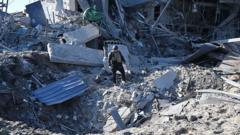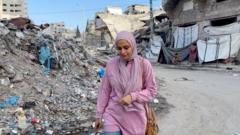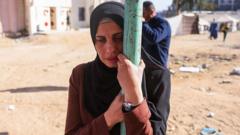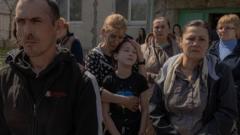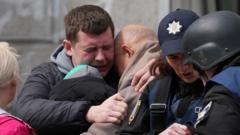Myanmar's capital, Nay Pyi Taw, is set for a significant redesign after a devastating earthquake caused widespread destruction in March. The military junta, led by Senior General Min Aung Hlaing, has announced plans to rebuild the city’s infrastructure with enhanced structural integrity to withstand future seismic events. The recent earthquake, recorded at a magnitude of 7.7, resulted in approximately 3,500 fatalities and over 5,000 injuries, with nearly 70% of government buildings in Nay Pyi Taw suffering damage.
Nay Pyi Taw's Capital Redesign Announced Post-Earthquake
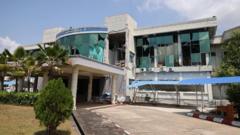
Nay Pyi Taw's Capital Redesign Announced Post-Earthquake
Myanmar's military government plans to revamp Nay Pyi Taw following significant earthquake damage, emphasizing future-proof construction.
Nay Pyi Taw, which has existed since 2005 and serves as the nation’s planned capital, has a sparsely populated landscape, highlighted by wide boulevards and minimal traffic. The city's transition from the former capital of Yangon has often been scrutinized, with the motives behind the relocation remaining ambiguous. In the wake of the earthquake, many government agencies have temporarily relocated to Yangon, and others are using makeshift structures for operations.
Amid ongoing civil unrest since the military coup in 2021, a recent temporary ceasefire was declared by the military to facilitate relief efforts post-earthquake, although reports indicate continued assaults on rebel-held areas. Repair and reconstruction efforts in Nay Pyi Taw may take years, as significant damage persists and critical documents are being relocated for safety.
The removal and preservation of essential cultural and governmental materials are underway, evidenced by the National Museum's efforts to protect literary works and historical artifacts amidst the chaos. As aid continues to be a vital need in the region, the impact of the earthquake aligns with the broader conflict gripping the nation.
In summary, Nay Pyi Taw’s redesign and rebuilding efforts reflect the dual challenge of addressing immediate disaster recovery needs while navigating the complexities of political unrest in Myanmar.
Amid ongoing civil unrest since the military coup in 2021, a recent temporary ceasefire was declared by the military to facilitate relief efforts post-earthquake, although reports indicate continued assaults on rebel-held areas. Repair and reconstruction efforts in Nay Pyi Taw may take years, as significant damage persists and critical documents are being relocated for safety.
The removal and preservation of essential cultural and governmental materials are underway, evidenced by the National Museum's efforts to protect literary works and historical artifacts amidst the chaos. As aid continues to be a vital need in the region, the impact of the earthquake aligns with the broader conflict gripping the nation.
In summary, Nay Pyi Taw’s redesign and rebuilding efforts reflect the dual challenge of addressing immediate disaster recovery needs while navigating the complexities of political unrest in Myanmar.

